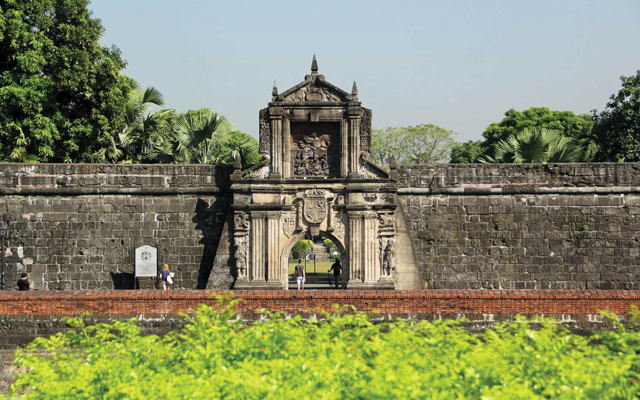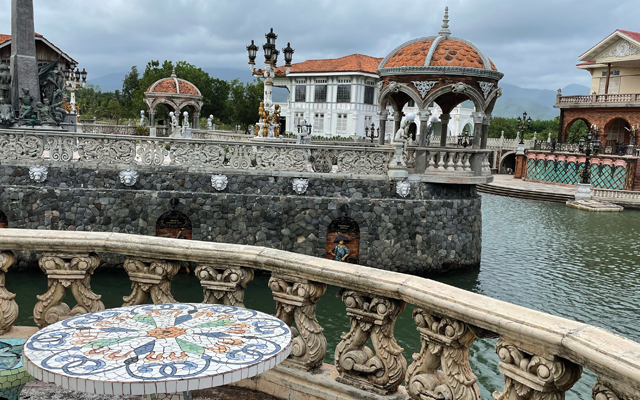The Philippines is inviting visitors to discover the days of old while embracing the future. By Rosa Ocampo
While Metro Manila and other parts of Luzon do not lack in historic and cultural sites, the challenge is making travellers appreciate them beyond mere cursory interest and obligatory social media photos and selfies.
The most basic route is by having well-trained and knowledgeable tour guides lead good tour itineraries.

Department of Tourism-accredited tour guide, Marianito Malacaman, did just that by lapping up history books, researching and consulting with historians, including Anthony Feredo who specialises in military history, including the Second World War (WWII).
He then cobbled creative tours of the metro’s key tourist attraction, the centuries-old Walled City of Intramuros, that go well with both locals and foreigners.
Malacaman’s daytime walking tour, Intramuros Past and Present, appends interesting but forgotten areas of history, with a glimpse of the here and now thrown in. His Intramuros night walking tour, on the other hand, highlights the darkest moments of the city during the Battle of Manila, hewing as close as possible to the atrocities of WWII, packed with oft-neglected yet interesting itineraries and vignettes.
Metro Manila is awakening to the necessity of protecting, conserving, and restoring its historic and cultural heritage, as proven by the restoration of, among many others, the art deco Metropolitan Theater, a neo-classical building that is now the Museum of Natural History, and Ayuntamiento Building in Intramuros.
The 110-year old Manila Hotel, the country’s oldest, awes with MacArthur Suite, replicating the original design of the penthouse where American general Douglas MacArthur stayed. The hotel also has a museum of artefacts and memorabilia of centuries bygone.
Another historic gem, Luneta Hotel, the only building in the country with French Renaissance architecture that was left to rot for decades, is now a fully restored, functioning hotel.

Pairing two historic destinations make them more appealing, and with a variety of activities thrown in travellers will be motivated to stretch out their time in the destination, according to Angel Ramos Bognot, president of Afro Asian Travel and Tours.
Bognot referred to the twinning of Subic Bay in Zambales, once the biggest American naval base in the world, with Las Casa Filipinas de Acuzar, a unique 400-hectare living museum of 63 original heritage houses plucked and rebuilt from various parts of the Philippines and 34 replicas of vintage structures in Bagac, Bataan.
Apart from an engaging tour of the former naval base, Subic Bay also offers sand and sea, interaction with the indigenous Aeta people in the jungle, theme park visits and bits of duty-free shopping.
Accessible from Subic via yacht or overland which takes about two hours, Las Casas Filipinas de Acuzar is a class of its own, a step back in time that includes living in the vintage houses, riding the balsa or local boat to visit various structures in man-made islands, taking the tranvía, kalesa or jeepney going around this vast living museum, and partaking of the meals of that era by the beach.
Added to the Subic Bay-Las Casas Filipinas tour are various WWII landmarks in Bataan, including the Zero Kilometer Death March Marker, the beginning of the 97km walk taken by almost 80,000 Filipino and American prisoners of war; 92m cross at the Shrine of Valor atop Mount Samat in homage to war heroes; Bataan WWII Museum; and the Japanese Friendship Bell Tower, a symbol of lasting peace and reconciliation.
In this land where fiestas, rituals and traditions are frequent celebrations, more and more destinations showcase their culture and heritage in songs and dances, gastronomy, legends and folklore, sports, handicrafts, and festivals religious, harvest, flower, summer, rites of passage – just name it, the Philippines has them.
Southeast Travel Corp general manager, Marlene Insigne, said tourists need not just see, but also feel, taste, smell and hear to better appreciate history and culture. This leads to the presentation of immersive and experiential tours, and in certain cases, the use of technology such as virtual augmented reality and light and sound.
“Let tourists mingle with the locals, especially with the elders who knew best the history and culture of the place not by the books but by experience,” Insigne said, pointing to the Subic Bay tour with a learning component from an Aeta elder who taught jungle survival skills to Americans who fought in the Vietnam War.
Another idea, Insigne said, is staying in a community for a night or a full day, sampling local food after watching a cooking demo, and witnessing festivities or rituals during their stay.
An example is a heritage trail of Malolos in Bulacan that included a culinary demo and a meal featuring the food served when the First Philippine Republic was proclaimed in Malolos in 1899; or a tour of the heritage town of Taal in Batangas, tailored to include a stay in an ancestral home, food and walking tour of old churches and vintage houses, and local flavours.




















